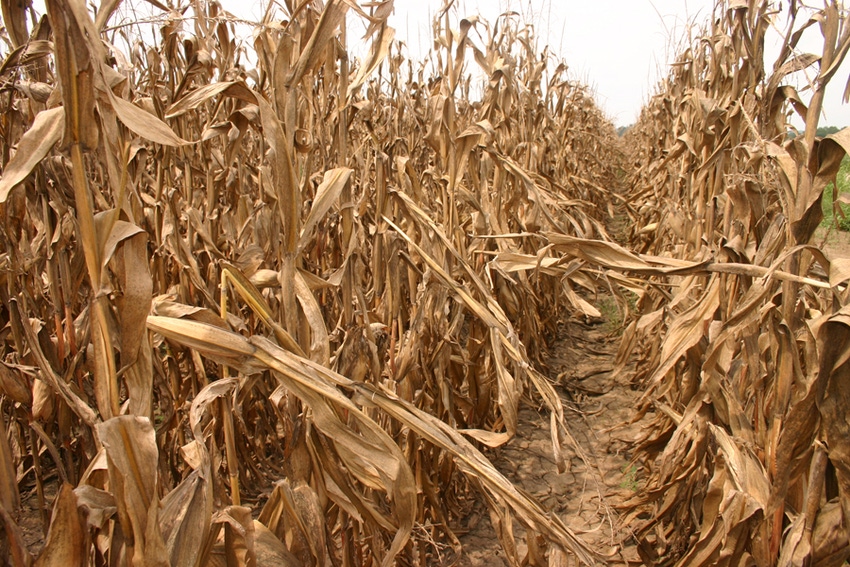
Drought-stressed corn concerns
If corn plants have green active tissue, the plant may recover and produce more plant dry matter or yield per acre if rain arrives. Do not harvest too early.If the corn plant has not pollinated, the quality of the corn silage will be reduced, but the plant may continue to store nutrients if green.
July 6, 2012

Illinois and other major areas in the Midwest are watching thousands of acres of corn experience severe drought stress. Livestock managers are planning strategies to implement if timely rain does not arrive soon, according to Mike Hutjens, University of Illinois professor emeritus of animal sciences.
“Corn plants are firing (drying) from the roots up the stalk of the corn plant,” Hutjens said. “Some corn has tasseled, which may not pollinate, resulting in barren corn stalks (no ears). Other cornfields are in various stage of grow from 3 to 6 feet in height.”
Hutjens said the following strategies can be considered:
If corn plants have green active tissue, the plant may recover and produce more plant dry matter or yield per acre if rain arrives. Do not harvest too early.
Immature, drought-stressed corn can appear dry and dead but may contain over 70 percent moisture in the stalk. For optimal fermentation, ensile when the dry matter in the chopped material ranges from 30 to 38 percent, depending on type of storage (in a bag, bunker, and piles it can be wetter, while upright storage must be drier).
If the corn plant has not pollinated, the quality of the corn silage will be reduced, but the plant may continue to store nutrients if green.
Drought-stressed corn can be high in nitrates. Commercial Illinois labs have measured field values as high as 17,000 ppm (1.7%). Levels over 4,400 ppm require feeding adjustments. Values over 17,600 ppm (in the total-ration dry matter) should not be fed to dairy cattle.
Fermenting corn as silage can reduce nitrate levels by 25 to 40 percent. Ensiling corn silage is a recommended practice, but green chopping or pasturing can be risky. Baling corn silage as hay or baleage is similar to grass hay quality when the plants are immature. No nitrate changes will occur when producing dry hay.
Adding a silage inoculant to improve fermentation is recommended as naturally occurring bacteria may be low. Do not add urea or limestone as it can slow down fermentation.
Drought- stress corn silage can contain 60 to 80 percent of corn silage nutrient value depending on the stage of maturity. Hutjens’ suggested guideline is that each foot of corn plant may yield one ton of dry matter (varies depending on stage of maturity). “Tests on the harvested drought-stressed corn silage after ensiling can measure nutrient content and nitrate levels,” he said.
“Livestock producers may be able to purchase drought-stress corn locally as it has little value for grain or hog producers,” Hutjens said. “Like livestock producers in the southwest areas of the United States last summer, dairy managers are asking what will be available and affordable for their dairy cattle this fall and winter? Drought-stress corn silage may be an alternative locally. Consumers will share in the cost of drought-stressed corn this summer as corn yields may be quite low, raising food prices and ethanol costs.”
You May Also Like



